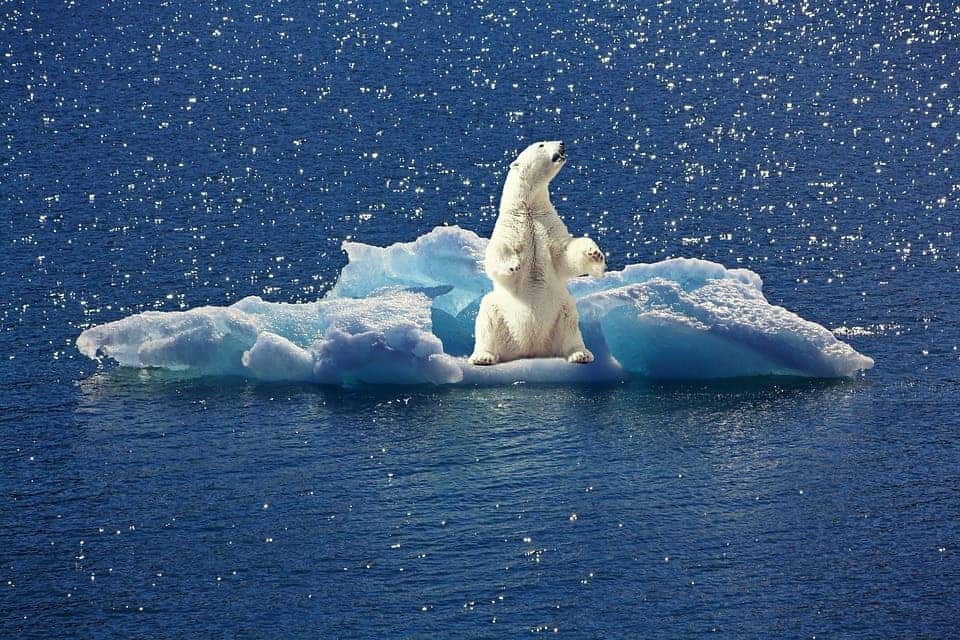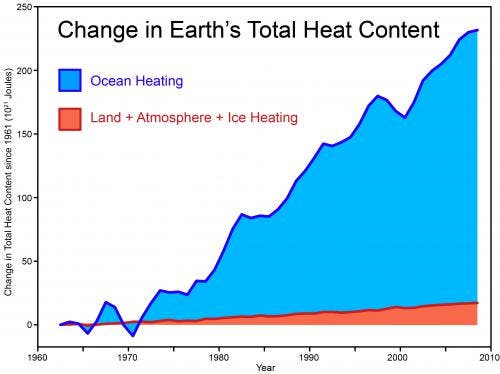
Accurately assessing the rate at which the oceans are warming is critical if we’re to predict the effects on marine life and the climate. For instance, warmer waters raise sea levels by melting ice, and the extra energy they hold cause more intense and frequent storms. We know for sure that human activities are warming up the oceans — the challenge lies in measuring by how much.
A new study suggests that previous assessments of oceanic warming have been conservative. The authors found that between 1991 and 2016, the oceans warmed by 60% more than the Intergovernmental Panel on Climate Change (IPCC) estimated in its 2014 Fifth Assessment Report on climate change. The IPCC is the leading international body for the assessment of climate change, and its evaluations form the backbone of the technical guidelines used by policymakers. Previously, a 2016 study found that the ocean’s heat content doubled since 1997.
During this time frame, the researchers calculated that the world’s oceans took up more than 13 zettajoules — which is a joule, the standard unit of energy, followed by 21 zeroes. That’s 150 times more heat energy each year than the energy humans produce as electricity annually.
Because the ocean takes up around 90% of all excess energy as the planet warms, knowing the actual amount of energy makes it possible to estimate the surface warming we can expect in the future.
“Imagine if the ocean was only 30 feet deep,” said Laure Resplandy, an assistant professor of geosciences and the Princeton Environmental Institute. “Our data show that it would have warmed by 6.5 degrees Celsius [11.7 degrees Fahrenheit] every decade since 1991. In comparison, the estimate of the last IPCC assessment report would correspond to a warming of only 4 degrees Celsius [7.2 degrees Fahrenheit] every decade.”

In its latest report, the IPCC stresses that a warming ocean threatens marine life such as coral reefs and kelp forests, onto which entire ecosystems are based. Coastal flooding, food shortages, and a mass die-off of coral reefs could be upon us by 2040. But the effects may actually be underestimated, according to researchers at Princeton University, who used a new approach for measuring ocean temperatures by looking at the levels of carbon dioxide and oxygen in the atmosphere.
These gases dissolve in ocean water and the amount that can be absorbed by the ocean depends on its temperature. The hotter it is, the more oxygen and carbon dioxide the ocean pushes out. It’s more or less like leaving a Coke outside in the sun — in time, as it gets warm, it will fizzle out.
You can reasonably argue that measuring ocean temperatures using thermometers is a lot more accurate, and you would be right. What you need, however, is thermal sensors around the globe, and these have been in place only since 2007. Reliable measurements of carbon dioxide, however, have been available since 1991, which offers a much greater timeframe to tease out differences in the rate of warming.
According to the Princeton researchers, the IPCC report’s upper estimate, which is similar to what they found in the new study, may be a more accurate representation of reality than the conservative estimate.
It remains to be seen, however, if the new gas-measuring method holds up to scientific scrutiny. In any event, the oceans and atmosphere are warming fast and the only solution is to urgently cut greenhouse gas emissions. According to Resplandy, emissions ought to be reduced by 25% compared to what was previously estimated.


